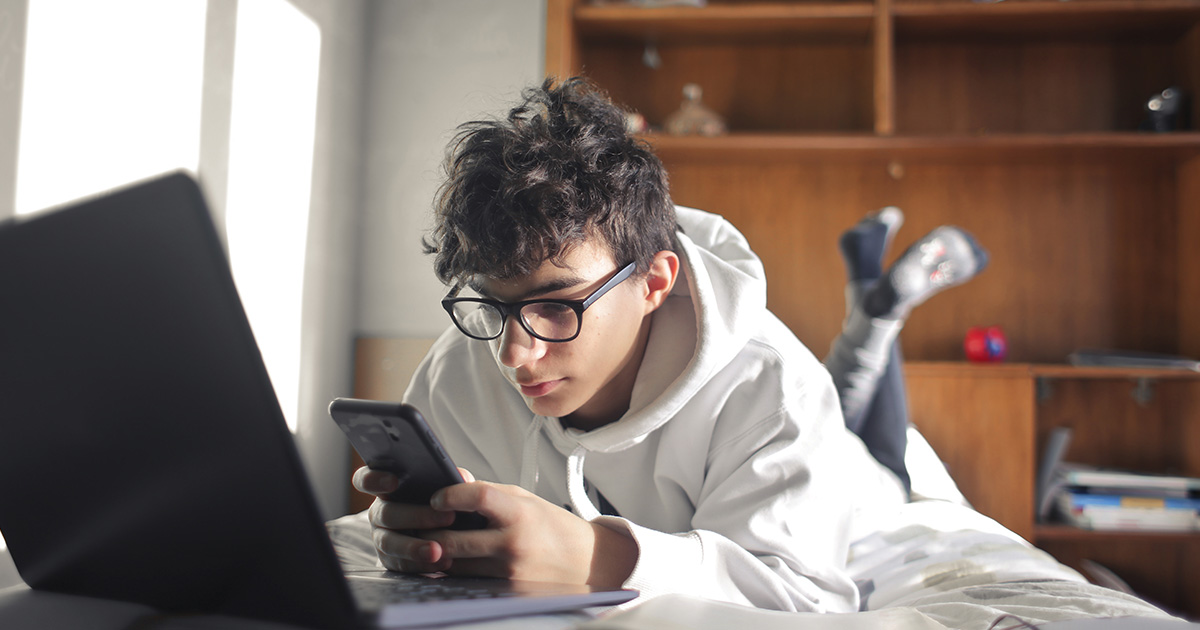The Woolcock Institute of Medical Research

Why won't my teen sleep?
Sleep psychologist Yael Galgut is part of a team at the Woolcock Clinic who use cognitive behavioural therapy (CBT) interventions in the treatment of insomnia and other sleep and comorbid mental health disorders such as anxiety and depression. She shares her insights on adolescent sleep.
If your teen lies awake at midnight, scrolling their phone or saying they “just aren’t sleepy,” you’re not alone. Poor sleep is a widespread issue among adolescents, affecting around 25-40 percent of teens. It’s often described as the perfect storm - where biological and psychosocial factors interact to drive later bedtimes and increase sleep difficulties.
During puberty, hormonal changes delay the body’s internal clock, making teens naturally want to go to bed and wake up later. They also become less sensitive to the build-up of sleep pressure making it easier to stay up late.
Layered on top of this are busy schedules and growing independence. Many teens juggle extracurricular activities, study, part-time jobs, and social lives – often online, in a 24/7 digital world where fear of missing out (FOMO) keeps them connected late into the night.
SOCIAL JET LAG
These factors drive later bedtimes that don’t align with early school start times, making mornings a struggle and learning during the day more difficult. To cope with sleep loss during the school week, teens often nap or “sleep in” on weekends. However, this “catch-up” sleep is usually mistimed, offers limited restorative value, and further disrupts their internal body clock. This mismatch – known as social jet lag – reinforces delayed sleep patterns and contributes to ongoing sleep difficulties. Over time, the bed becomes a place associated with stress, frustration and wakefulness.
At the Woolcock Clinic, we see adolescents presenting with insomnia – struggling to fall or stay asleep and feeling distressed about their sleep. They often report fatigue and trouble concentrating during the day.
A key starting point for improving adolescent sleep is keeping a consistent wake time, even after a poor night. Going to bed early doesn’t guarantee sleep, but waking up at the same time helps reset the body clock to build sleep pressure, making it easier to fall asleep at night. Morning light exposure further supports this process by aligning the internal body clock with the external environment, signaling to the brain when to feel alert and when to feel sleepy.
Want to stay up to date with our research on sleep and respiratory conditions?
Sign up to our quarterly newsletter
A MENTAL MARATHON
“Increasing parental control over devices and simply removing screens from the bedroom does not always result in sleep – especially if teens are getting into bed mentally and physically stimulated or haven’t built up enough sleep pressure. For many, bedtime is the first moment without distractions – when the mind finally tunes in and a “mental marathon” begins in bed.
A common complaint is that “I’m trying to go to sleep, but my mind is racing”. Teens may ruminate on social interactions, school stress or an overwhelming to-do list – making it harder to fall asleep.
Sleep is a continuation of the day’s events. We need to prepare both the body and mind for it.
While most people understand the need to wind down an hour before bed, few realise the importance of setting mental boundaries around what we think about in bed at night. At night, the brain does not switch off. In fact, the emotional centres become more active, while rational centres slow down – making emotional content and nighttime worries feel more intense.
VISUALISE TO SLEEP
Nighttime is not the best time for problem-solving or emotional processing. Setting aside time earlier in the evening to process the day’s events, problem-solve through worries or document your to-dos is more effective and helps the mind let go at night.
Sleep is about letting go and feeling safe. Learning to change the “mental” channel in bed to something safe and less engaging can help. One technique is the alphabet method: Start with the letter A and pair it with a neutral object – e.g., A is for apple. Visualise it in detail – is the apple red or green? is it sweet or sour? is it crunchy or floury? Move to the next letter when ready – e.g., B is for bear. A real bear or teddy bear? The goal is to keep the mind occupied but not too engaged with neutral, safe thoughts helping teens drift off to sleep with less struggle and more ease.










